Brit Rob Sayer knows a thing or two about how to light a stage—not just because he’s been doing it most of his adult life but because he teaches the subject at Bath Spa University in the UK, in-between his demanding career as a freelance stage lighting designer and blogger about all things music-related. He’s got plenty of entertaining stories to tell, but when it comes to choosing stage lighting equipment, he gets serious. Lighting a stage is a critical task, whether it’s for a Shakespearean comedy or heavy metal band.
Leaving an audience in the dark isn’t just a show killer, but it could easily be a career-ender, too, which is why your ability to evaluate, choose and buy appropriate lighting stand equipment elevates your credentials from the doofus who didn’t get it right to the Brainiac on the team.
We would like to help you figure out where to put your bucks and your confidence by making lighting stand recommendations you can take to the bank, and we’d also like to teach you a bit about this equipment niche that can make or break a performance.
-

$263.16$249.99Check on Amazon Check on Musician's FriendBase spread of 48-inches for enough stability to stand up to a 16-light mount. High-grade aluminum material. Three durable, telescoping vertical shafts for quick set-up and tear down.
06/29/2025 04:03 am GMT -
 $499.95Check on Amazon Check on Musician's Friend
$499.95Check on Amazon Check on Musician's FriendBilled as “the truss system safer to use than cable-based systems."
06/28/2025 08:11 pm GMT -
 Check on Musician's Friend Check on Walmart
Check on Musician's Friend Check on WalmartWell-built, stable and eminently affordable in light of the number of elements that are included in one price.
We like to flatter ourselves on occasion by thinking we know all there is to know about every aspect of the music business, but that lasts only about a minute since our staff members aren’t shy about challenging findings if something seems rotten in Denmark. On the other hand, many of our staff members could write encyclopedias on stage lighting and other aspects of stagecraft and we turn to them to author reports like the one you’re reading, forwarding those facts and figures through a gauntlet of staffers. If we still don’t believe we’ve turned a topic inside out, we occasionally wind up standing on sound stages and visiting factories to cover all bases. Obsessive? It’s a label we wear with pride.
On-Stage LS7730
Base spread of 48-inches for enough stability to stand up to a 16-light mount. High-grade aluminum material. Three durable, telescoping vertical shafts for quick set-up and tear down.
As a leading supplier of support stands to the world, the company mission—-affordability, durability and innovation—-is built into every product.
When it comes to testing every rig before it enters the marketplace, these stage lighting stands must survive the rigors of performance testing under a variety of production environments to make certain that everything—down to critical locking pins—meets corporate standards.
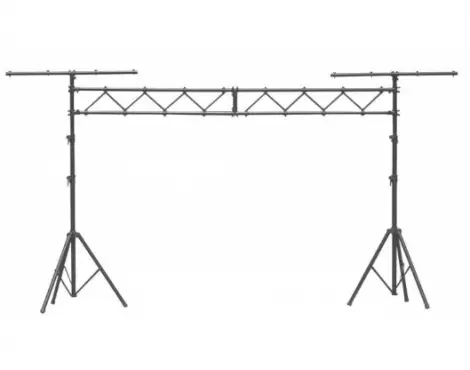
Credit: TMPPro Inc
The On-Stage LS7730 has the capability of being all things to all people: There are two tripod-base stands fitted with three telescoping vertical shafts for quick set-up and tear down.
Tension-locking knobs and pins adjust to keep the unit secure. Even when it’s in full expansion mode (11.5-feet), the T-bars accommodate four-part cans each, and there are two 5-foot truss sections ready to secure and hold another four cans (not included) that can total 16 lighting par cans.
With a weight capacity of 200 pounds, this low-cost unit can be set up in a New York minute using screw-on plastic brackets and thumb screws to properly adjust the height of the stand to suit the needs of the production.
With a base spread of 48-inches, there’s enough stability to stand up to a 16-light mount. The LS7730 is in it for the long haul thanks to high-grade aluminum materials beneath black powder coating.
Professional and amateur stage crafters are not shy about their experiences, and it’s to them we turn for the skinny on how this rig performs in action.
While we encountered a couple of whines about package damage attributed to the shipper rather than the manufacturer, even techs who tried substituting a competitor say they’ve lived to regret their decision. “Buy On-Stage” one insisted, “that’s what all the professional sound studios use.”
In addition to product quality, the number of brand fans purchasing the LS7730 who rave about fast assembly is so diverse; we found ourselves searching for one buyer who disagreed and came up empty.
If you’re expecting to light a stage that’s filled with performing bodies, things could get crowded given this stand’s vertical expanse.
That stated, this consensus of feedback is worth noting:
- Crews have no problem lining things up efficiently and quickly.
- Learning the art of setting the pins takes time, but it would take a bulldozer to collapse the rig once mastered.
- So solid and thick it makes “thin umbrella shaft” competitors look wimpy.
- Stage crew members didn’t expect double vertical extension tenacity and heavy-duty connectors.
- “So large and impressive, size alone makes people think ‘Wow, these guys have their stuff together!’”
- Sturdy carry cases protect LS7730 components from damage during transport.
Extra touches count:
- On-Stage replacement parts don’t cost a fortune in the off chance something breaks.
- Cleverly designed to hold a banner in case the stand must do double-duty as an advertising vehicle.
Odyssey LTMTS1-PRO
Billed as “the truss system safer to use than cable-based systems."
Odyssey Lighting sticks to stage production lighting and doesn’t veer off into the land of audio-visual or musical equipment. Because the company has a refined focus, the brand name is known throughout domestic and foreign stage lighting and production communities.
Billed as “the truss system safer to use than cable-based systems,” the LTMTS1-PRO has full cranking capability to lift the rig to a top height of 8.5-feet.

Credit: Musician’s Friend
Like our top pick, it handles 200 pounds nicely along a 10-foot horizontal span, but you can only rig up eight lights, less than half the capacity of the aforementioned On-Stage system. Crew can easily schlep this around at 50-pounds total and the price tag works for production companies still operating on a shoestring.
Crew can easily schlep this around at 50-pounds total and the price tag works for production companies still operating on a shoestring.
Complaints from shoppers seem to be centered (literally) on their experiences with middle sway on the crossbeam, but other purchasers are delighted by the bang they get for the buck and recommend treating this stage lighting product with some TLC by not pushing the cranking mechanism to extremes so the system enjoys a long life.
For those who have been forced to work with a four-light truss until now, eight-light capability is like arriving in Nirvana (the Viking heaven, not Curt Cobain’s digs).
For lighting directors and techs given responsibility for maintaining, moving and setting up the LTMTS1-PRO, their admonition is to treat materials that go into the manufacture of this system with caution: all-plastic connectors will hold up nicely if they’re treated with respect.
Snag some O-clamps to avoid denting the truss once those lights are hung. “Easy to load, setup and store; for the price, how could you not buy two more?” one satisfied customer asked.
Odyssey Lighting Tripod and Truss Package
Well-built, stable and eminently affordable in light of the number of elements that are included in one price.
Why put another Odyssey system atop the list? Because plenty of stage directors are seeking a more expansive system that comes with a pedigree and this tripod and truss package are the whole enchilada.
The system includes two Odyssey LT-P2 Tripod Lighting Stands fabricated of sturdy black aluminum that cover 12-feet and one Odyssey LTMTS1-PRO Lighting Truss System with 8.5-foot elevation capacity when cranked to the summit.

Credit: Musician’s Friend
With a comparable weight load capacity of 200 pounds and 8-light capacity, this system comes with rubber bottom covers to reinforce stability.
Plenty of outspoken stand-buying professionals extol the virtues of this system’s fast, easy set-up and we’ve yet to find one who states they would be hesitant to recommend this rig to a colleague.
In concert, this product is well-built, stable and eminently affordable in light of the number of elements that are included in one price.
For music types turning to Musician’s Friend for the whole truth and nothing but the truth, comments like, “I’ve no clue how they make money” on this system because “this truss system is enormous” resonate.
Of course, nothing’s perfect. Even handy techs find it difficult to follow assembly instructions and, according to one, you can’t even count on the free Allen wrench to do its job. On a lighthearted note, one buyer warns readers not to use the Odyssey Lighting Tripod and Truss Package for gymnastics!
Is this too far fetched a suggestion? Not if you’re buying this lighting stand to showcase performers who tend to abuse stage equipment while performing (intentionally or not so much). But what sealed the deal for shoppers is-—well, the deal.
If you price individual items needed to put together this system and then compare that total to this complete package, it’s hard to imagine not seeing the value in acquiring the entire system.
On-Stage Stands LS7720BLT
Need an easy way to remember this model if you’re still lusting after our top pick but you’re just starting out or you’re still living in your parent’s basement? We call this honorable mention “LS7730 Lighting Stand with Truss Light”; the downsized version of our top pick, yet it costs less than most.
Finding reviews lower than 4.5- on a 5-point scale has proven impossible, so let’s just say that the BLT with Side Bars is a classic that responds to knob adjustments nimbly and the locking pins double up on security so your walls won’t come tumbling down when you can least afford to have them do so.

Credit: TMPPro Inc
Despite being the Light version of the big boy, this unit supports four cans on the T-bar and four on the side mount bars. The telescoping vertical shaft is engineered with three sections for smooth expansion, and the stand has a respectable base spread of 48-inches.
Made of the same high-grade aluminum used for the On-Stage LS7730, you can extend the height to 10-feet employing the friction-locking knobs/locking pins hardware.
“I’d recommend this stage lighting equipment to a friend” say untold numbers of website shoppers but if you’re orchestrating an extravaganza, don’t even think about purchasing this affordable rig because it has limitations.
You’re not going to be able to affix enough light cans to illuminate a Broadway stage because this rig only supports 110-pounds.
It’s hard to beat the features and the price for the solid construction, stability, transport and set-up benefits. Any attempt to overload this rig with extra cans can put your production at risk, so appreciate safety features (e. g., pegging to secure the center stand) and don’t overload your system.
This likely doesn’t describe you because you’re methodical and craft plans in plenty of time to troubleshoot, but we feel the need to share the story of a shopper who decided to buy the 7720BLT on the day he intended to use it for a performance.
To his delight, he removed it from the package to find the unit much taller than he imagined yet there was nothing fragile about the stand. “Go buy this truss; it’s awesome!” he enthused, but don’t take the chance he took by buying it on the first day you intend to use it or you may not share his luck.
Chauvet DJ GigBAR 2
You knew we couldn’t leave out a lighting system that’s got more bells and whistles than a Pink Floyd tribute band’s rig, right? The Chauvet 4-in-1 System comes with everything but a trained tech to help you get it up and running.
Don’t let the “DJ” designation fool you; plenty of stage directors pick this rig because they love the special effects that turn an ordinary stage into a wonderland, though you may have to arrange for installment payments if your plastic won’t cut it.

Credit: Musician’s Friend
Spring for the Chauvet 4-in-1 and you’re ready to rock:
- Stage size is unimportant because the LED lighting system floods even expansive areas.
- Control the action from your choice of electronics: display, wireless foot switch, DMX or your cousin Greg.
- Adjustable laser-cast beams and dots can flood the stage with movement and excitement.
- Pars and strobes promote whatever color mixing effects you can dream up.
- This package includes carry bags, tripod, a remote, mounting brackets and wireless foot switch.
Is this pricey system for everyone? Hardly. But fans are a so wild about it we would be hard-pressed to leave it off our list simply because it’s so unique. While the majority of buyers use this unit for DJ gigs, plenty of stage techs wouldn’t take a substitute if offered to them because they love the way this unit bathes a stage in exciting color during live musical performances.
But what wins the hearts and minds of stage lighting pros is the fact that this Chauvet rig weighs less than a healthy Thanksgiving turkey.
We’re not joking when we tell you that shoppers write love letters to their music store sales reps for turning them on to this unit! If you’re thinking of becoming one of them, you’ll need a sturdy pen so you’ve got enough ink to write the check and draft those fan letters.
Studio v. Stage: What’s the Difference?
If you’ve pursued a career in professional lighting, one of the first things you learned is the difference between studio and stage lighting.
Sure, every artificial lighting system requires light sources, modifiers, power packs and stands on which to support them, but when was the last time you were required to light an environment in which people stood still?
When performers do their thing on stage, the ability to continually adapt lighting systems to suit the changing mood, music or ambience is as critical to a performance as is the talent, so don’t let anyone tell you that the responsibilities of a light technician are anything less than critical.
From Greek Tragedies to Iconic Limelight
We believe in giving credit where credit is due, so we give a shout out to Greek and Roman performance art staged thousands of years ago when God was the chief lighting technician and performers didn’t dare show up late in the day.
Back then, theaters were constructed facing east to west so patrons could watch afternoon performances illuminated by the sun. Once that heavenly light source set, spectators had to go home.
When the first early modern English theaters with roofs were constructed—think the Globe Theater in Stratford-On-Avon—stage producers had to rethink the topic of lighting. The natural and only choice was using candlelight to illuminate stages.
Years later, gaslight was introduced. In 1642, King Charles II attended plays in Italy and returned home determined to install chandeliers after experiencing ceiling-lighting that cast huge amounts of light across vast spaces.
These massive chandeliers held huge numbers of candles and cast a brilliant light on performers, but the impressive new lighting scheme wasn’t without its own drama: patrons and performers alike were subjected to hot wax that dripped down from the candles, causing everything from ruined clothing to hospital trips.
When engineers followed the gaslight home-illumination trend and installed these footlights along the rims of stages, not only did it immediately become safer to perform and attend productions, but this new power source lead to early experiments with incandescence techniques that heralded the coming of electricity.
As a lighting professional, this history of stage lighting is meant to give you a new appreciation for progress, so take a moment to give thanks that you don’t have to worry about massive chandeliers filled with dripping candles.
8 Benefits of Stage Lighting
When house lights go up, that action alone is enough to elevate the pulse rates of both performers and audience members, but that’s just one of the outcomes of a properly lit stage during a performance. Others are:
- Stage lighting reveals forms and shapes. It has the ability to alter the perceptions of audience members, especially when shapes and forms are three-dimensional elements.
- When it comes to setting the proper tone and mood for a performance, lighting technicians understand, for example, that changing red lights to soothing tones like lavender has the ability to impact the sensibilities of an entire audience.
- Nothing rivals the impact of house lights disappearing so a spotlight can showcase one or more performers. This lighting change has the ability to distract audience members from elements directors don’t want noticed.
- Broad-spectrum lighting takes special skills to pull off, so viewers see everything that’s going on that they are meant to see in the moment. Selective visibility is an art that’s to be mastered properly.
- Forget color psychology; you’re seeking to achieve stage psychology by using color to situate performers in time and space. A blues band bathed in blue light is a great example of how a hue can artistically support a performance.
- For stage managers on a budget who have no access to scenery, props or other materials, a clever mix of lighting and projected images have the ability to transform an environment dramatically.
- The ability to control light can literally send the audience a cue that the performance is starting or ending. During the show, lighting is frequently used to introduce change or dramatize onstage moves or shifts in music scores.
- We’ve saved the best for last: special effects. Mastery in this area not only makes a lighting technician more valuable to production managers, but generates bigger bucks. Sure, you’ve picked this gig because you love to travel, but when you get home, it’s good to have plenty of cash in your wallet.
Let It All Hang Out
What’s a professional lighting tech’s mantra? Focus. Position. Hang.
These three pithy words describe the process of making sure light shines on the proper place (hot spot; usually somebody’s head) amid the focus area (other folks sharing the limelight) and the ever-critical selection of the location on the fly or the stand that’s pointing exactly where you want the light to hit.
If you’ve been around the block a few times and have had a wide range of lighting assignments, you may already be familiar with fly systems, front-of-house piping, trusses and rigs plus chain motors.
On the other hand, if all you want to do is make sure the act you’re supporting gets a safe, moveable and manageable set-up that can be torn down fast to move on, picking the right stage lighting stand is doubly important.
How to Select the Right Stage Lighting Stand
Apologies for the stereotype, but musicians and lighting pros frequently have two things in common: tight budgets and a longing for the biggest and best equipment on the market.
You already know that high-quality lights, stands, and accouterments required to keep everything up and running comes in all price ranges and styles and it can be easy to go for the cheap in hopes of upgrading once stars hang on dressing room doors.
The good news is that manufacturers and designers are continually churning out design and material upgrades. The introduction of new fabrication materials, engineering innovation and state-of-the-art design has led to everything from market diversity to price fluctuations.
That stated, your lighting stand needs are unique. Will you be asked to light stages for days at a time? Required to pack everything up daily to get on the bus and on the road?
How about your crew: Is it just you, do you have minions at your disposal or will you rely on local talent? Recognizing limitations when you shop for stage lighting stands is important, so before you decide what to buy, consider these questions:
- How often will you have to tear down and set up your lighting stands?
- Are your transportation resources such that weight and portability aren’t issues?
- Are you (or is someone else in your crew) proficient at fixing portable or static lighting on the fly?
- How many lights do you really need to do the job?
- Are you more amenable to putting together your own mix of stands or are you more comfortable with a complete system that’s ready to go out of the box?
- Are you in good enough shape to build and tear down stands or do you prefer a less labor-intensive set up?
- Do you depend upon sturdy carry cases to protect your system because it is destined to spend a lot of time being shipped or stored?
- Do you seek a basic lighting stand system that can be upgraded in the future–or do you plan to trade your old system once revenues allow for a more sophisticated rig?
7 Basic Steps to Set a Stand and Light a Stage
- Installing lighting trees or pipes; weighing them down if you’re worried about the stand toppling for one reason or another. If your rig features a weighted base, thread the pipe, top with the crossbar and tighten everything down.
- Stationing sandbags around the floor–even if your stand is weighted—is a prudent move. If you’ve seen film footage of outdoor concerts that turned into something out of The Wizard of Oz’s tornado scene, you’re probably already a savvy person who insists on sandbags out of an abundance of caution.
- Locating one or more power sources to keep dimmer packs operational. Find circuits and turn off each breaker to get the lay of the land and sketch a diagram so you don’t have to start testing lines in mid-performance.
- Affixing lighting stands to industrial (12-gauge) extension cords, coiling the slack cord at the foot of each stand so nobody (including you) trips and falls. Have at it with as much duct tape as you like to add to your comfort level and give everything a final wrench tug just in case.
- Clamping lights to the stand and tightening them down should be SOP, but be gentle if you’re working with an aluminum tree because this metal is soft and bends easily. Use tilt knobs on the lamps to position them correctly.
- Connect all lights to the dimmer pack. Show your professionalism by starting at house left when you plug the lights in so they’re easy to identify on the console when you’re in working the system.
- Attending to the console set-up and, if applicable, seeing to your DMX cable installation.
Is it wise to use the same power source for both lighting and an instrument? What do you think? If you’re installing lights on a unit that’s so high, an extension ladder is required, don’t undertake this installation alone. Then, test, test, test. You’ll be glad you did.

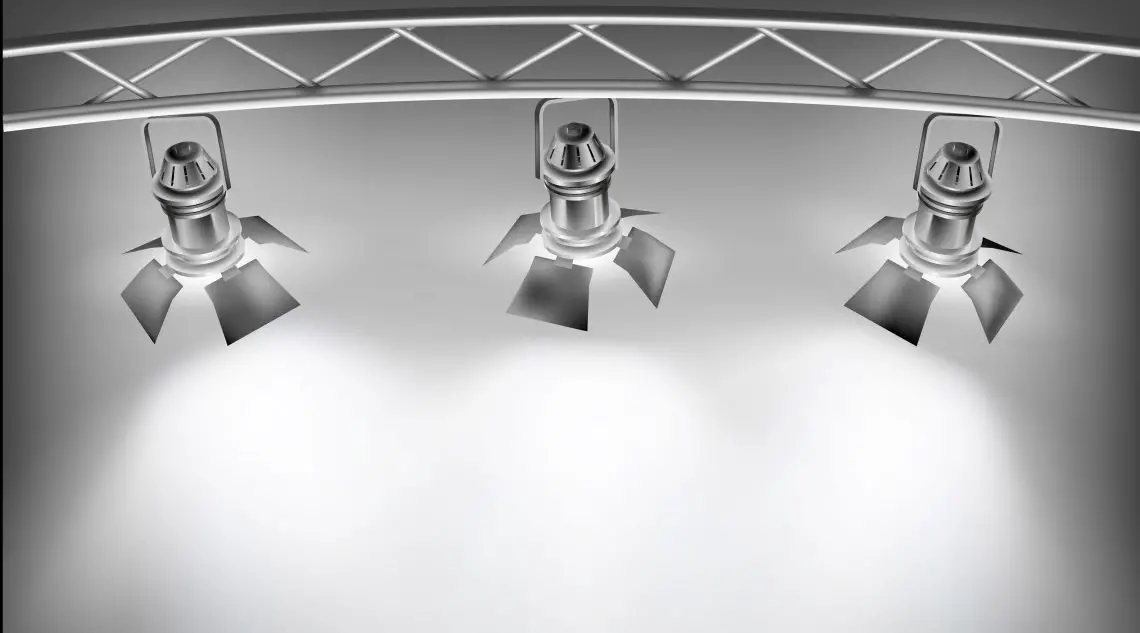




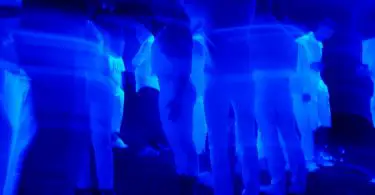
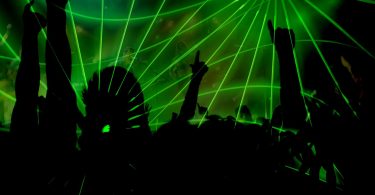
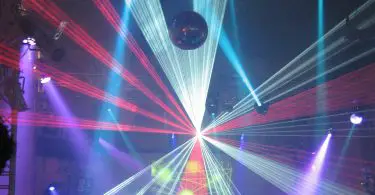
Stage lighting can make or break the show. Having a capable lighting tech is as important if not more important than the equipment and rig though. It’s a real art. Some nice recommendations on stands. Would love to be under the Chauvet DJ GigBAR 2 4-in-1 in the hands of a great tech.